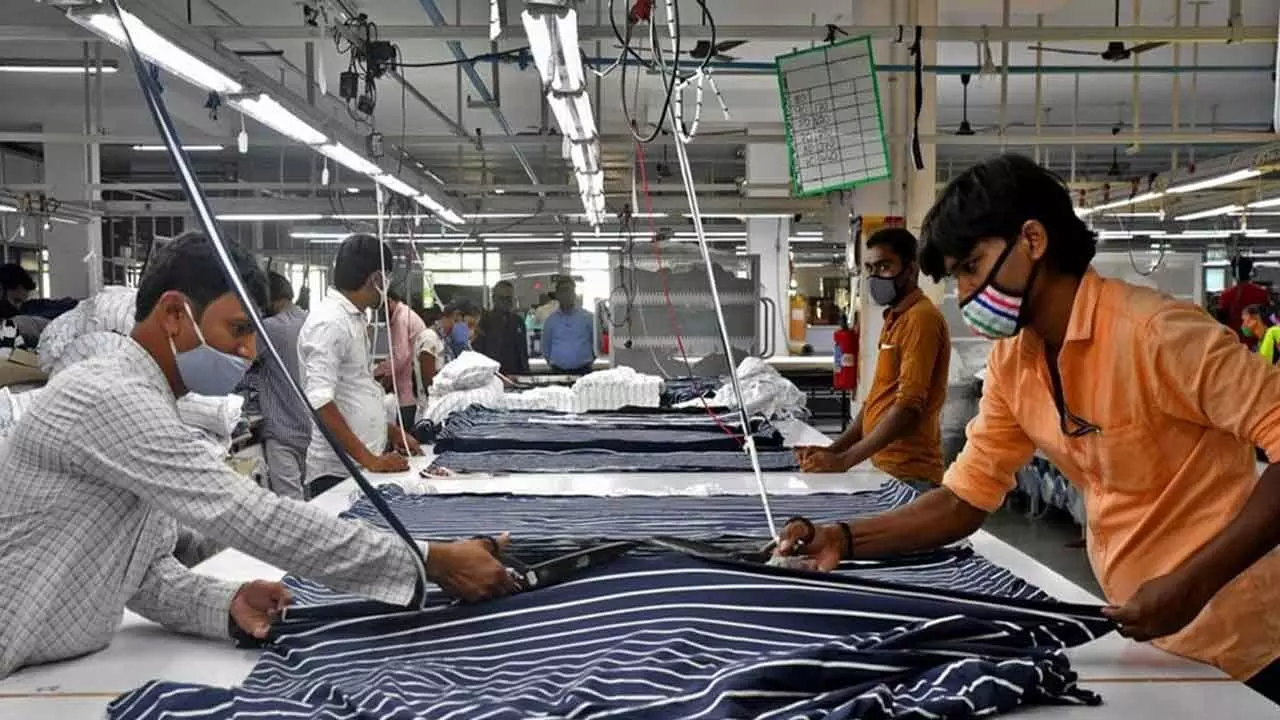High US tariffs leave Indian textiles hanging by a thread
High US tariffs leave Indian textiles hanging by a thread

Textile and apparel seems to be one of the Indian industries that have been hit hard by the recent high tariff imposition by the Trump Administration. Recent imposition of 25 per cent additional ad valorem tariff and 25 per cent penalty (adding up to 50 per cent additional tariff) has significantly undermined the competitiveness of Indian T&A exports to the US.
One must, at this point, try and understand the magnitude and nature of the economic and operational impact in T&A industry and try to identify priority policy interventions needed to mitigate adverse effects and restore competitiveness.
Little wonder therefore that more than one half of the respondents in a recently conducted survey by the Confederation of Indian Textile Industry (CITI) have urged the, Centre to announce a moratorium on repayment of existing loans, while 42 per cent have recommended the introduction of collateral-free loans to help address the surge in working capital requirements.
Moreover, about one half of the respondents emphasized the need to enhance raw material competitiveness by removing import barriers such as QCOs, import duties, and related restrictions, which they believe would help mitigate the adverse impact. As high as 46 per cent of the respondents also expressed intent to diversify their export markets and sought Government support and facilitation to explore new destinations and opportunities.
There are various other policy measures and suggestions, which came up during the survey that are considered to have the capacity to mitigate the Impact of the recent tariff imposition by the US government. These suggestions include providing support for export diversification and market development initiatives,
Expediting FTAs with key major markets like EU and more, Increasing RoDTEP and RoSCTL rates and enhancing duty drawback benefits, Offering interest subvention and other financial relief measures to ease liquidity constraints, Offering support in form of Focus Market Incentive Scheme for US bound shipments, Reduction of corporate income tax or granting tax holidays (to reduce financial crisis).
Interestingly, the PAN India survey was conducted amongst different types of business entities catering to the US market directly or indirectly, amongst all the segments of the T&A industry--MSME (69 per cent), Large (31 per cent), Direct Exporter (52 per cent), Deemed Export (18 per cent), Both (30 per cent).
All these findings and recommendations assume great significance in the wake of the fact that the United States is the top exporting destination for India’s Textile & Apparel (T&A) products accounting to about 28 per cent of India’s global T&A exports.
Quite significantly, nearly 1/3rd of the respondents reported that their turnover has been adversely reduced by more than 50 per cent. The major factors contributing to this decline include: Requests for discounts by the US buyers (30 per cent), Cancellation or postponement of orders (25 per cent), Reduction in order volumes (20 per cent).
One also has to keep in mind that nearly 85 per cent of the respondents have reported an inventory buildup due to the reduction in orders, about 2/3rd of the respondents have to offer a discount to their buyers, majority of which are offering it to the tune of 25 per cent to remain competitive.
That's not all. Over half indicated that the credit period has increased by 3 to 6 months, reflecting a substantial strain on liquidity. And additionally, around 40 per cent of respondents reported a rise in working capital requirements by more than 30 per cent, further highlighting the growing financial stress within the sector.

